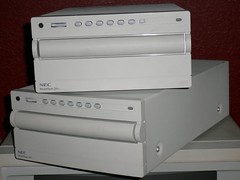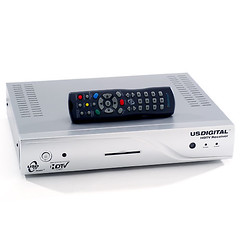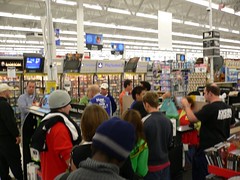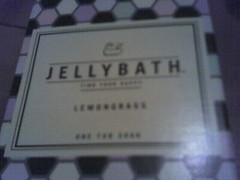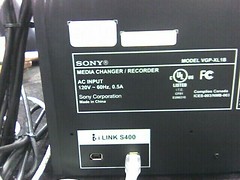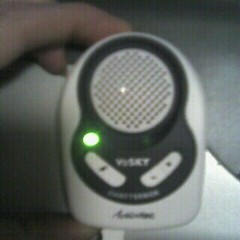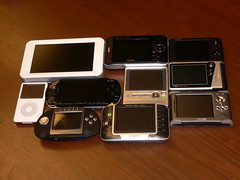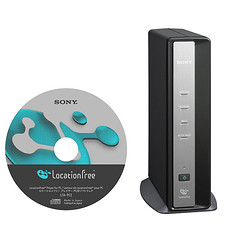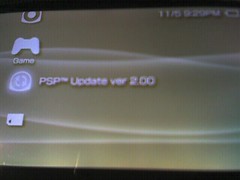Wednesday, November 30, 2005
Media Center wasn't the first with Changer Support
Back in the early 2000 time frame, I used many PC's to simultaneously rip a handful of CDs to MP3 format, so the process didn't take long during evenings that I was home. Five years later, the new Sony X1 Media Center PC and associated VGP-XL1B 200 DVD/CD changer supports a Media Center plug-in to rip 200 CD's at a time, but at a cost of over $2200, it's an expensive proposition. Trying to do this on the cheap, I dug around my house and found some old SCSI NEC 2Xc 7 disc CD changers (just like the Nakamichi's) and went about finding software that supported them. Turns out that iTunes shows the two of them as 14 disc drives, and grabs the CDDB information associated with each disc, but doesn't allow you to rip sequentially.
The solution? Enter the Riptastic! MP3 CD Ripper with multi disc changer support. This thing will even sequentially rip between two single disc players in your PC if you don't have a changer! It grabs the CDDB information and rips along at 1.1x for my SCSI NEC's and faster with some of my other drives. The best thing about this solution is that I no longer have to babysit my computer. I just load up my discs then head about my business. You can pick your compression and bitrate and also the file naming convention. It will also encode simultaneously while ripping, but my 1GHz test machine could stand to be a bit more stout for the encoding process. Does anyone need a hundred or more discs ripped? My hardware is ready, but my music is already on hard drives...
Tuesday, November 29, 2005
Robbing bandwidth from the rich...
The tuner works as an ATSC or high-definition decoder for free but the magic was that in select markets, for a mere $19.95 per month, Fox News, Discovery, Disney and about 30 other "cable" channels can be received. The signals for these channels are broadcast over unused capacity within the HDTV UHF spectrum using technology from DotCast. HDTV frequencies are 6MHz wide and offer 27mbps of throughput. The FCC requires that an HDTV channel use only up to 19.4Mbps of bandwidth so that leaves a bit extra for USDTV to lease and combine with partially used channels over remaining spectrum from each broadcaster in a region. DotCast developed this multiplexing technology to spread data across many channels as a way to download programs to computers or set-top boxes. With USDTV, this "video data" is decoded with an ATI NXT2004 as standard definition video programming from a VSB/QAM tuner. This is sent to the TV by way of a ATI Xilleon chip running at 300MHz, which handles the AC3 and MPEG2 decoding. The only connection that you need to receive their signal is a bow-tie or external UHF antenna. No cable feed or even satellite dish aiming is required. This also means that rain fade should be non-existent as well. All that you need is a strong UHF signal to your home, or an antenna suited for its reception.
This is an interesting concept, as USDTV has created an MVNO model for television. Think about all of the money that your local broadcast networks spend to keep their broadcast towers up and online. An even more expensive undertaking is keeping Murdock and Ergen's DirecTV and DISH Network satellites in a 22,300 mile orbit in space. USDTV can ride on the backs of infrastructure that is already in place and their only cost is customer acquisition and programming. It worked well for Virgin Mobile, Boost and hopefully the just released Amp'd. There are some TV affectionado's who are concerned that HDTV quality will suffer as broadcasters supplement their revenue stream with data casting, but most markets that are using the technology get a majority of their bandwidth from digital networks owned by PAX, which only programs in standard definition - leaving plenty of bandwidth for USDTV. The jury is still out on whether they can be successful in the market place, but with a great channel selection, low cost and inexpensive hardware, they have all of the things going for them including the ability for the end user to "self install." Now that is scalable!
Monday, November 28, 2005
888-ELF What?
Thursday, November 24, 2005
Non Powered Gadgets
Gadgets like the Targus Coolpad, a turntable swivel for your laptop and the Tetran Headphone Holder are $12 smart accessories that just make sense. These problem solvers are cheap and smart - perfect for stocking stuffers or the guy or gal who has everything. Especially if you are on a budget.
So if you are still going to be shopping for the top gadget of the season, keep your eyes peeled for some gems that have no battery slots and that do not plug into the wall. Chances are your gift will be an unexpected suprize hit for the holidays.
Wednesday, November 23, 2005
XBox 360 Launch Part Deux.
Production should not be an issue since they have been making these since the spring. I went to Tokyo 30 days after the launch of the PSP and they were still not available at retail - I had to get mine from a back-ally DVD trader. That contrasts with the spring US launch of 500,000 units sold which were easily obtainable. My local Best Buy had hundreds of units available in stacks with few customers. I even went back the next day to pick up another one. Microsoft has stated that 400,000 360 units were being shipped to the US before Christmas, while these numbers are just shy of the PSP two-day sale quantities, this artificial demand and sales during the "right" selling season should mean that although the XBox will be a sell-out, you will have plenty of units between now and December 25th. I'm headed to Costco to see if I can get one before Black Friday. I bet I will.
Tuesday, November 22, 2005
 "I've got the XBox 360 until 9am Blues......" This happy strumming camper outside of the Grapevine, Texas Best Buy is at the head of the pack for one of their 30 "Premium" $399 allocated systems to be released in the morning. A line stretched across the front of Best Buy to Mattress FIRM, who lost an opportunity to rent mattresses to these young adults. Just around the corner at Wal*Mart, 16 "Core" units were available 9 hours earlier, at midnight. I was lucky #17 in line. If only I didn't return home to get my camera, I too would have one, but with merely a 10 minute check-out wait. That's more my style! At another mid-cities Wal*Mart, 2 units were there until 8 were picked up from UPS by an employee, which had embargoed them until November 22nd. Across town in Addison, two 360's were sold at Wal*Mart and a handful of campers waited at a Best Buy - one had been there for 25 hours already. With 40 degree nights in North Texas, I can't see myself waiting. Further North in Frisco, my friend who left the Addison store arrived at 12:30 to be the 21st person in line out of 16 units available. But why is there such a demand for the device? Is it that the XBox 360 is the nearly the first "true" HDTV capable gaming system. Or is it an artificial demand due to low numbers of product allocation like the PSP had this time last year in Japan, but not during the spring US launch? The console will operate at all high-definition resolutions, albiet using the component analog video connection. A digital HDMI connection is rumored to be released "when Microsoft thinks that the market is ready." My home theater has two HDMI devices and a switching receiver. We are ready MSFT! The console will also make for a nice Media Center Extender to play back stored content in another room. My burning question is will it play back my HD content recorded via my All in Wonder ATSC tuner, or will it ignore that video like my Linksys Media Center Extender. It will never receive DVD's across the link due to DMCA issues but as my library of HDTV content grows, it would be nice to share that around the house - over wired 100MBPS links of course, just like I can with the Roku HD1000. More photos at http://www.flickr.com/photos/gadge/65875289/ from the launch festivities.
"I've got the XBox 360 until 9am Blues......" This happy strumming camper outside of the Grapevine, Texas Best Buy is at the head of the pack for one of their 30 "Premium" $399 allocated systems to be released in the morning. A line stretched across the front of Best Buy to Mattress FIRM, who lost an opportunity to rent mattresses to these young adults. Just around the corner at Wal*Mart, 16 "Core" units were available 9 hours earlier, at midnight. I was lucky #17 in line. If only I didn't return home to get my camera, I too would have one, but with merely a 10 minute check-out wait. That's more my style! At another mid-cities Wal*Mart, 2 units were there until 8 were picked up from UPS by an employee, which had embargoed them until November 22nd. Across town in Addison, two 360's were sold at Wal*Mart and a handful of campers waited at a Best Buy - one had been there for 25 hours already. With 40 degree nights in North Texas, I can't see myself waiting. Further North in Frisco, my friend who left the Addison store arrived at 12:30 to be the 21st person in line out of 16 units available. But why is there such a demand for the device? Is it that the XBox 360 is the nearly the first "true" HDTV capable gaming system. Or is it an artificial demand due to low numbers of product allocation like the PSP had this time last year in Japan, but not during the spring US launch? The console will operate at all high-definition resolutions, albiet using the component analog video connection. A digital HDMI connection is rumored to be released "when Microsoft thinks that the market is ready." My home theater has two HDMI devices and a switching receiver. We are ready MSFT! The console will also make for a nice Media Center Extender to play back stored content in another room. My burning question is will it play back my HD content recorded via my All in Wonder ATSC tuner, or will it ignore that video like my Linksys Media Center Extender. It will never receive DVD's across the link due to DMCA issues but as my library of HDTV content grows, it would be nice to share that around the house - over wired 100MBPS links of course, just like I can with the Roku HD1000. More photos at http://www.flickr.com/photos/gadge/65875289/ from the launch festivities. 
Monday, November 14, 2005
The Return of the Blob
Why congeal water you say? Because in a bath tub that you could soak in, it forms an insulating barrier to hold the heat of the water in longer. And that is way cool. The powder additive contains non-toxic elements to turn the water to jelly as it is absorbed into sodium polyacrylate. Additives that are good for your skin like vitamin C as well as black tea extract, L-menthol, coloring, and fragrance are also mixed within the powder.
The inventor from Kobe Japan filed the patent in February of 2000 (probably after taking a bath that quickly became cold) which was granted relatively quickly in August 2001. The patent #6,281,177 reads like a recipe until you get to the scary claim fifteen, a subordinate of number nine. It reads "gelatinous mixture draws water from human skin immersed in said gelatinous mixture." I may be reading into this, but wasn't something JUST like this a source of a horrifically scary movie from the late 1950's? That's right. Jellybath is The Blob.
I am not getting near this stuff, but if you do, be prepared for a "NOTICE" of the patent before you buy the product online. I guess at $24 dollars per bath they want to keep competition down so that you are the only one who is getting soaked. Just don't forget that you will still need to take a shower afterward. www.jellybath.com
DRM DMCA FireWire and HDCP Blues...
All that being said, I find it odd that Sony, owner of many labels, production companies and media production facilities has begun shipping their latest product to aid in mass-theft, I mean ripping of digital media. The Sony VGP-XL1B 200 CD/DVD/Dual Layer Burner has a FireWire/iLink port to tie into their matching Media Center PC. The Windows XP MCE 2005 Roll-up has new features to let this 200 disc changer literally rip through a majority of your CD collection and digitize them on your hard drive in a single sitting. The dual-layer DVD burner within will copy those tracks back to discs or write your recorded low-definition captured television to a DVD. An empty PCI slot inside will hold an HD tuner which you can record and also burn to DVD (albeit in a low definition, yet clear version) now. Finally, it will use your Internet connection to grab the artwork from up to 200 of your store bought DVD's that you place inside and let you choose a movie by selecting a picture from the assortment displayed within the Media Center Interface.
Two features are missing in my opinion, due to DRM, which may be able to be "patched" with a program like DVD43 or AnyDVD. You cannot play your DVD's through Media Center Extender devices and thanks to Content-Scrambling System or CSS you cannot rip your DVDs to the hard drive. Now at an average of 6GB per DVD, ripping movies would take 100 times more space than ripping an audio CD. But that is using MPEG2; DivX or MPEG4 would take much less space and make the content much more portable.
I think that you should be able to put the movies that you buy on any device or television around your house. I have all of my music CDs encoded into MP3 and they can be played in any room in my house. My whole house audio system is my most used gadget in my life. Video, however stays on DVDs in a shelf until I get up, choose, and insert them into one of a half-dozen players in my home. I wish that it was digitized like my music was. I want my DVDs to be seen anywhere. Throw a watermark in the video to track the serial number of the device that encoded it and make the people who do bad things pay for their crimes of distribution. If I want to make a copy for my own fair use on another device I own, like the Sony PSP then let me!
As I close this, did you notice anything unique about the photo above? The DVD player only has a single connection, even better, it is a high quality digital port. A port that pushes video and audio in the clear, FireWire. That's right, no encryption means that we may soon see FireWire CSS strippers just like devices that would remove Macrovision from composite signals to allow you to make VHS copies of your video tapes or DVDs. If this 200 disc changer is the hackers dream, sign me up for the 400 disc version. I have some fair use to get to.
Tuesday, November 08, 2005
VoSKY Chatterbox
10 Video Playback Devices
Apple beat Sony at the portable music game because of CODECs (compression) first and design second. Sony's digital players required that you CHANGE your MP3 music into ATRAC format up until September 2004. This relatively unknown compression was a carryover from their 1993 MiniDisc technology. Meanwhile Apple's PortalPlayer designed iPod could play 7 different audio formats. This meant the music that the early adoptors had already placed on their hard drives required no more than a copy to the iPod hard drive - no re-encoding or time consuming step was necessary.
Once the early adopters like something they become the gorilla spokespeople on the street pushing the best technology to their peers. The Apple led design made them easy to look at after the technology made them easy to listen to. Video players have a difficult battle as digitized content is wrapped in Digital Rights Management, or DRM that is difficult, if not illegal to break. DVD's employ Content Scrambling System or CSS, which under The Digital Millennium Copyright Act of 1998 (warning: PDF link) makes it illegal sell ripping software which "breaks" this. That means you cannot play the DVD that YOU bought on a different piece of hardware which may not have a DVD player embedded. On top of this, the different portable playback devices, ten of which are shown above, all support different processor speeds, CODECs (technically just the decoders) and screen resolutions.
What are you to do? Sony and Apple want to make it "easy" by providing a closed system that will let you convert content that you create into video for the PSP and iPod with video. Forget about putting your DVD movies on those devices without jumping through a multi-step process. There are third-party programs that will re-compress multimedia content like DivX, but these applications do not speak portable device language however.
Enter Diversified Multimedia - the company that created the once popular, but now illegal DVD X Copy that was taken off the market from court orders in the spring of 2004. This sharp team of programmers has regrouped to create software that manages your audio, video and photos residing on your computer hard drive, with the necessary encoder CODECs to make this content palatable for your mobile devices. Their Media Vault software to converts any number of different compression formats into any number of mobile device resolutions.
The best part about this software, which gives it true utility, is that as your devices get upgraded, you can add modules to the software to support your new devices. So your Treo 650 can play back your library today and the currently un-released Treo 700 with its different screen resolution and CODEC can display old or new content in the future. These guys have created the missing link between movies and TV shows stored on Media Center PC's and TiVo's. No longer will you be beaten by a CODEC. Information wants to be free, and mobile.
http://www.divmm.com/ - Diversified Multimedia
Monday, November 07, 2005
How to watch TV - from outside your house.
Location Free TV
Sing Media
Orb Networks
